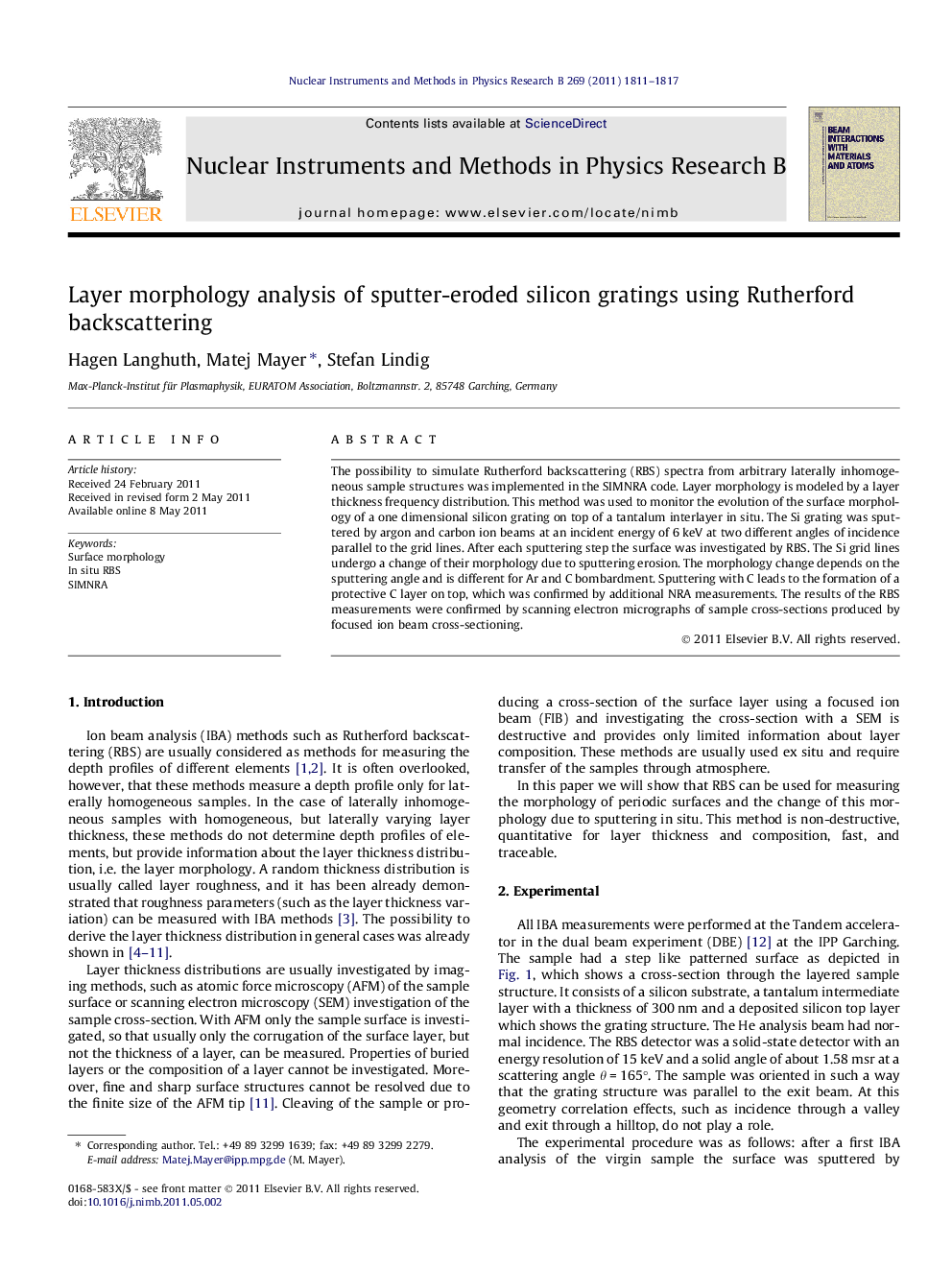| Article ID | Journal | Published Year | Pages | File Type |
|---|---|---|---|---|
| 1685900 | Nuclear Instruments and Methods in Physics Research Section B: Beam Interactions with Materials and Atoms | 2011 | 7 Pages |
Abstract
The possibility to simulate Rutherford backscattering (RBS) spectra from arbitrary laterally inhomogeneous sample structures was implemented in the SIMNRA code. Layer morphology is modeled by a layer thickness frequency distribution. This method was used to monitor the evolution of the surface morphology of a one dimensional silicon grating on top of a tantalum interlayer in situ. The Si grating was sputtered by argon and carbon ion beams at an incident energy of 6Â keV at two different angles of incidence parallel to the grid lines. After each sputtering step the surface was investigated by RBS. The Si grid lines undergo a change of their morphology due to sputtering erosion. The morphology change depends on the sputtering angle and is different for Ar and C bombardment. Sputtering with C leads to the formation of a protective C layer on top, which was confirmed by additional NRA measurements. The results of the RBS measurements were confirmed by scanning electron micrographs of sample cross-sections produced by focused ion beam cross-sectioning.
Keywords
Related Topics
Physical Sciences and Engineering
Materials Science
Surfaces, Coatings and Films
Authors
Hagen Langhuth, Matej Mayer, Stefan Lindig,
